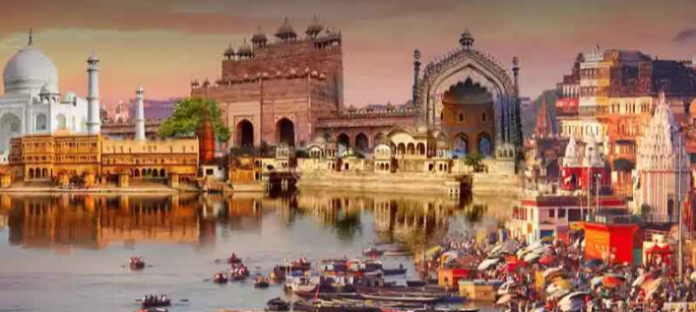Piyush Gautam
When it comes to elections politicians, psephologists, punters and poll pundits all begin to think of caste. In the run-up to the 2024 general elections, the air is abuzz with caste calculations, caste chemistry, or pure casteism. As usual, caste politics is at play in Uttar Pradesh. There is a proverb popular in and around political corridors, as UP goes, so goes India. Uttar Pradesh has been the most politically significant state, accounting for the maximum number of Lok Sabha seats, that is, 80. Caste remains a factor in deciding the poll outcome in Uttar Pradesh. Who will use this ‘card’ best this time?
For the BJP-led NDA to win 400 plus seats in the upcoming polls, it must win all the seats from UP. Reality could be different if the SP-Congress alliance gets part of its act right. There’s something odd about the numbers being touted these days in New Delhi’s political circles and the media. Now, we are being told that the Bharatiya Janata Party (BJP) could win up to 370 Lok Sabha seats in the upcoming general elections. In 2019, when it contested only 437 seats, it won 303 seats with 37 per cent of national votes. The halfway mark for a simple majority in Lok Sabha is 272 seats.
What is also being stated in some quarters is that Uttar Pradesh with its 80 Lok Sabha seats could now be unattainable for the opposition after the January 22 inauguration of the lord Ram temple in Ayodhya and the skyrocketing popularity of both Prime Minister Narendra Modi and Chief Minister Yogi Adityanath. Since Modi’s shift to Delhi from Ahmedabad, UP has indeed delivered the bulk of MPs to the saffron party. In 2014, the BJP won 71 seats on its own and two seats went to its ally the Apna Dal. The SP won five seats and the Congress got only two seats. In 2019, the BJP’s Uttar Pradesh vote share touched nearly 50 per cent but it won 62 seats. The BSP, then in alliance with Samajwadi Party, won 10 seats and the SP won five seats. Congress got only one seat.
There is no formal announcement of whether Congress leader Rahul Gandhi would contest from two seats as he did in 2019: he lost from Amethi and won from Wayanad in Kerala. Former Congress president Sonia Gandhi, who won the only Lok Sabha seat for the Congress from UP in 2019, has moved on to the Rajya Sabha. Will her daughter and Congress general secretary Priyanka Gandhi make her Lok Sabha debut from either Amethi or Rae Bareli? It is likely, but not certain.
That leaves us with the SP at this point being the main Opposition force that is aligning with other parties in Uttar Pradesh. There are seats where specific demographics make the party traditionally strong, but with both the Centre and state under the BJP’s rule, the SP needs to be strong on the technical aspects of the elections. That would include monitoring voter lists, ensuring deletions do not happen and ensuring that the strongrooms where EVMs are kept after polling are guarded in a staggered national election.
The SP must also know that it could face indifference among its traditional Muslim voter blocs (who form ~20 per cent of the state population) that may in several locations opt out of being posited against in a polarising contest. Contrary to superficial comparisons about Uttar Pradesh being the new BJP fortress-like Gujarat, the BJP would know that it is not a uniform state. It has different zones, dialects that change, and large swathes of poor and jobless people who can vote for opposition were it to appear strong and offer a narrative. Till then, they would settle for the promise of a free ration that is offered by the BJP regime. What the BJP has managed in Uttar Pradesh is the psychological perception that it is too strong to be defeated.
Uttar Pradesh today is undoubtedly a BJP-dominated state, where one can anticipate a one-sided contest in as many as 60 seats. But a tough fight is widely expected in 20 seats if the opposition acts wisely. BJP is well aware of this stark reality, so it is cautiously operating on these very seats. It is also expecting some spoiler game for opposition from Mayawati-led BSP. The Saffron party is only focussing on minus Yadavas’ backward caste polarisation under its large Hindu agenda. Yet sweeping the state is a daunting prospect in light of the alliance the state’s two parties—the Samajwadi Party (SP) and Congress recently stitched up. These two rivals have bitterly fought each other for dominance of UP for decades, yet they cast aside their long-standing differences in a last-ditch effort to keep the BJP at bay.
The BJP is better in its social engineering as it has successfully alienated the dominant political actors as insignificant political opponents now. The BJP has redefined itself as an innovative party by expanding its social base into the lower OBCs and the most politically marginalised Dalit groups that are often counted as insignificant in the conventional political calculations of the Congress, the SP and the BSP. The BJP has engineered caste factions within the collective traditional vote of the SP and the BSP and its shift has improved the BJP’s vote share from 15% in 2012 to 50% in the 2019 general elections. It appears that the BJP is confident of retaining its social base in the upcoming elections too and therefore, the political alliance of the opposition appears a little weak here.


